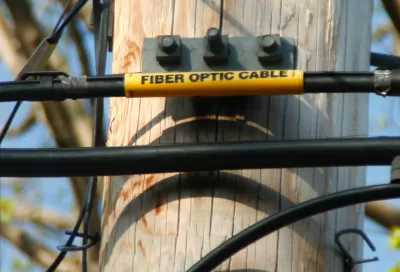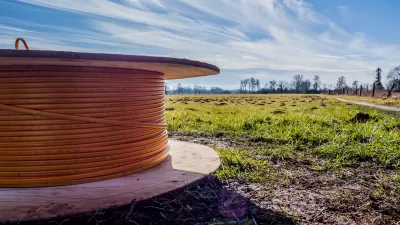Not everyone that has access to high-quality Internet infrastructure is making use of it.

The Metropolitan Policy Program at Brookings has released a new report that maps our digital broadband access and subscription around the country. The big takeaway from the report: many Americans that have access to broadband are not subscribed.
Fred Dews writes an article to introduce the "Signs of digital distress: Mapping broadband access and subscription report, starting with the finding that n in American neighborhoods" report, starting with the finding that "while over 90 percent of Americans live in places where wireline broadband is available, over 73 million live in neighborhoods where in-home broadband subscription rates are below 40 percent."
The report describes neighborhoods with less than 40 percent subscription rates as "low subscription neighborhoods."
“Such neighborhoods,” they write, “concentrate the digitally disconnected portions of the American population, leaving their residents at risk of missing the economic benefits of a high-speed internet connection.”
The post by Dews goes onto map and list the top performers in broadband subscription:
- Palm Bay-Melbourne-Titusville, Florida
- Urban Honolulu, Hawaii
- Bridgeport-Stamford-Norwalk, Connecticut
- New York-Newark-Jersey City, New York-New Jersey-Pennsylvania
- Boston-Cambridge-Newton, Massachusetts-New Hampshire
Worst performers are also listed and mapped:
96. Fresno, California
97. Tulsa, Oklahoma
98. Birmingham-Hoover, Alabama
99. Augusta-Richmond County, Georgia-South Carolina
100. Jackson, Mississippi
FULL STORY: Top 5 and bottom 5 US metro areas for broadband subscription

Maui's Vacation Rental Debate Turns Ugly
Verbal attacks, misinformation campaigns and fistfights plague a high-stakes debate to convert thousands of vacation rentals into long-term housing.

Planetizen Federal Action Tracker
A weekly monitor of how Trump’s orders and actions are impacting planners and planning in America.

San Francisco Suspends Traffic Calming Amidst Record Deaths
Citing “a challenging fiscal landscape,” the city will cease the program on the heels of 42 traffic deaths, including 24 pedestrians.

Bend, Oregon Zoning Reforms Prioritize Small-Scale Housing
The city altered its zoning code to allow multi-family housing and eliminated parking mandates citywide.

Amtrak Cutting Jobs, Funding to High-Speed Rail
The agency plans to cut 10 percent of its workforce and has confirmed it will not fund new high-speed rail projects.

LA Denies Basic Services to Unhoused Residents
The city has repeatedly failed to respond to requests for trash pickup at encampment sites, and eliminated a program that provided mobile showers and toilets.
Urban Design for Planners 1: Software Tools
This six-course series explores essential urban design concepts using open source software and equips planners with the tools they need to participate fully in the urban design process.
Planning for Universal Design
Learn the tools for implementing Universal Design in planning regulations.
planning NEXT
Appalachian Highlands Housing Partners
Mpact (founded as Rail~Volution)
City of Camden Redevelopment Agency
City of Astoria
City of Portland
City of Laramie





























